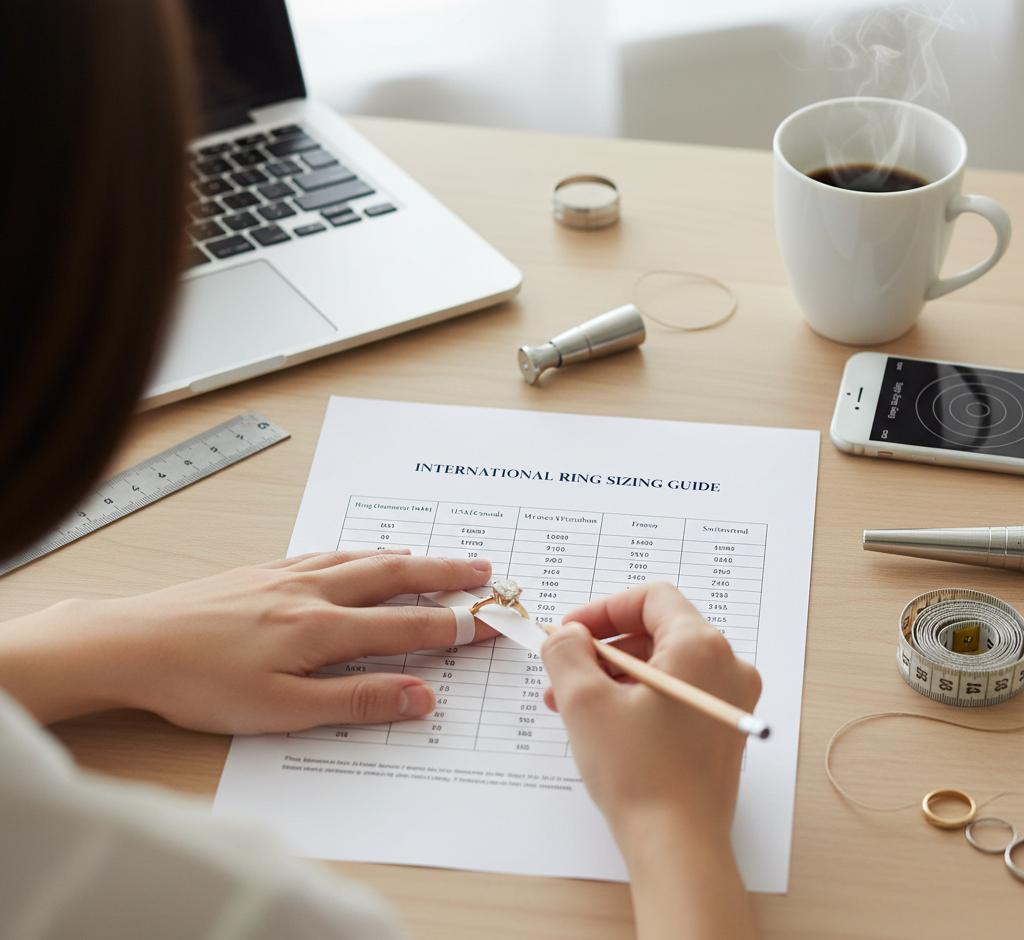The Complete Guide to Measuring Ring Size at Home & Using the Conversion Chart

The Complete Guide to Measuring Ring Size at Home & Using the Conversion Chart
Finding the perfect ring size shouldn’t be a guessing game. Whether you’re picking out an engagement ring, wedding band, or a special piece of jewelry, the right fit makes all the difference. A ring that’s too tight can be uncomfortable, while one that’s too loose might slip off.
Finding your ring size is easy, and you can do it at home. Just follow this simple 3-step guide to get an accurate measurement. Then, use our conversion chart to find your perfect fit across all major international standards.
What’s Inside
- Pick Your Measuring Method
- Ring Size Chart
- Final Tips for the Perfect Fit
- Ring Size Chart FAQs
Pick Your Measuring Method
A few ways exist to measure your ring size. You don’t need fancy tools—just a ring you own, a printable guide, or even a piece of string.
Option 1: Use a Ring Sizer (Most Accurate)
- A ring sizer is a tool that lets you test different sizes directly on your finger.
- Simply slide the sizer onto your finger—it should fit snugly but still move easily over your knuckle.
- The number or letter displayed on the sizer is your accurate ring size.
- Tip: You can order inexpensive plastic ring sizers online or pick one up at a local jewelry store.
Option 2: Use a Printable Ring Sizer (For an Existing Ring)
A printable ring sizer is a quick and convenient tool for finding your ring size using a ring you already own. Simply print the chart and use it to compare the inner diameter of your existing ring to the standard sizes. This method is great for double-checking your size before making a purchase.
Option 3: Use a String or Paper Strip (Quick DIY Method)
Step 1: Measure Your Finger
- Cut a thin strip of paper or grab a piece of string.
- Wrap it around your finger’s base, marking where the ends overlap.
- Lay it flat and measure the length with a ruler (in millimeters).
- Match your measurement (circumference) to our ring size chart below.
- Important: String can stretch, so don’t pull too tight while measuring.
Consider These Fit Factors
Your ring size isn’t always the same—it can change based on different conditions. Keep these factors in mind for the best fit:
- Time of Day Matters: Fingers are smaller in the morning and larger in the evening because of natural swelling. Measure in the evening for the most comfortable fit.
- Temperature Changes Everything: Cold fingers shrink, while warm fingers expand. Measure at room temperature for the best accuracy.
- Knuckles Can Affect Fit: If your knuckles are large, go half a size up so the ring slides on easily but still fits securely at the base.
- Band Width Plays a Role: Wider bands feel tighter, so you might need to go up half a size for a thick ring.
Pro Tip: If you’re between sizes, it’s usually best to size up—a jeweler can always adjust the fit if needed.
Universal Ring Size Converter
Type a US/Canada size or a ring diameter (mm) — matching rows will be highlighted and a conversion summary shown.
| Ring Diameter (MM) | USA/Canada | United Kingdom | France | Germany | Japan | Switzerland |
|---|
